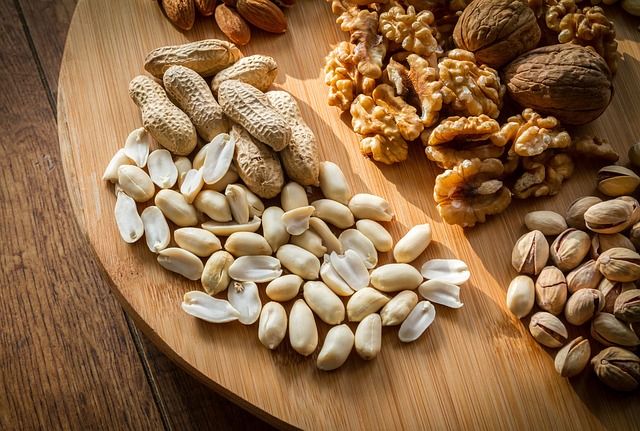Enhance ‘quality of life’ for your food-allergic child with oral immunotherapy (OIT)
Improved quality of life for children with food allergies is a parent’s greatest hope. With Oral Immunotherapy (OIT), a proven desensitization process, hundreds of children have been able to experience transformed quality of life. Parents say that after OIT their children are less anxious about food and going to new places, less concerned that they will have a reaction, have less physical and emotional distress, are less concerned about eating in restaurants, and feel safer when going to vacation destinations. The children are also less concerned about being left out of activities involving food and have less frustration from social restrictions.
What is OIT and how does it work?
Oral Immunotherapy (OIT) can provide a long-term solution for peanut, milk, egg, tree nut, soy, sesame/sunflower, and wheat allergic patients. It usually takes less than 6 months, and at the end of the program, most patients with these food allergies are free to consume the foods whenever they want.
Who can be treated?
If the patient has a confirmed food allergy based on a recent history and a significantly positive food allergy blood test or skin test, he or she is eligible for OIT. If their diagnosis is less certain, that is, there has been some problem or a positive test in the past, but no recent reaction, additional testing is done to confirm the food allergy. Confirmatory testing by blood test and skin test may be sufficient but, often an oral food challenge or OFC is performed. This is the gold standard for food allergy testing and involves carefully giving increasing amounts of the suspect food while carefully watching for signs of a reaction. If there are any symptoms, for example itchy mouth or some hives, the OFC is positive confirmation of the food allergy. If a meal-sized portion (e.g. 8 ounces of milk or a whole egg) is eaten with no problem, the food allergy has been disproved. All patients with confirmed food allergies are eligible for treatment.
How is the treatment implemented?
Prior to beginning OIT, parent(s) and child attend at least 1-2 office visits to be sure that all other allergy-related problems have been identified and controlled. At these visits, OIT is explained and both the parents and the patient are encouraged to ask questions and address any worries or concerns. They also have the option to speak with or meet other parents of children who have completed the treatment.
It is important for children to understand the value of the treatment by showing them how the doses are mixed, seeing the big board with photos of happy program graduates, helping them realize that once the treatment is successful they can attend birthday parties, campouts and do more things with their friends without being worried about an allergic reaction. Every child is different so the treatment is individualized.
The protocol for treatment starts with a powdered form of food diluted in water mixed with Kool-Aid flavoring that is then administered orally with a syringe. For liquid foods such as milk, no powder is used. The next step is to progress to a powder form of the food and final stage is solid food, such as a whole peanut, egg or organic whole milk.
Flavors can be varied when Kool-Aid is used to mix the treatment; for instance, grape for peanuts; cherry for egg; orange for tree nuts. The allergenic food can be mixed into other foods or drinks to help mask the flavor, if necessary. Peanut flavor is the hardest taste to disguise. Milk and egg are much easier. The food cannot be cooked or baked as baking alters the protein in the food allergen making it less stimulating. Finding what tastes good to the child is the best way to keep them interested in the process and makes the parent’s job much easier.
The treatment begins with a long day during which 15-20 doses, starting with very tiny amounts of food (e.g. 1/50,000 of a peanut) are given. The first day ends if there are any reactions at all or if the patient reaches the target for the day. The parents are then provided with a supply of the highest tolerated dose to given at home twice a day. After a week, they return to the office to be challenged with the next higher dose. This process continues until the patient is taking the target dose (e.g., 8 ounces of milk, 12 peanuts, one whole egg white).
Patients are allowed to progress at their own pace. One week for each dose increase. Typically, the overall timeline is 20-23 weeks. The number of dose increases varies with the food being used: egg has 19 dose increases after the first day, milk 23, peanut and tree nuts 21, wheat 20. If a child has an adverse reaction, the dose is reduced by taking a step back in the process. For example, decrease the dosage from two peanuts to only one.
The average length of time a food treatment takes for the patient to reach his/her target is about 26 weeks. However, some may take longer. Once the target is reached, treatment is continued once a day for at least three years.
More than 80% of our patients who have been treated with OIT can now safely consume foods that once threatened their health.
Leaders in Food Allergy Treatment!
Our office has been a leader in OIT treatment both regionally and nationally for over a decade. Hundreds of food allergic patients have successfully completed our program.

